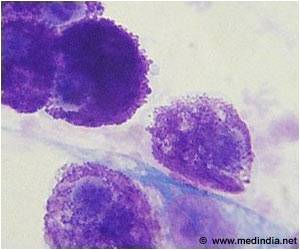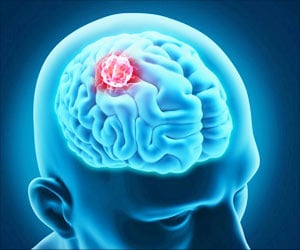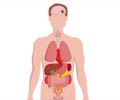- Signs and Symptoms of Brain and Spinal Cord Tumors in Children - (https://www.cancer.org/cancer/brain-spinal-cord-tumors-children/detection-diagnosis-staging/signs-and-symptoms.html)
- Brain tumours in children - (http://www.macmillan.org.uk/cancerinformation/cancertypes/childrenscancers/typesofchildrenscancers/braintumours.aspx)
- Brain Tumors - (http://kidshealth.org/en/parents/brn-tumors.html)
- Brain tumor - children - (https://medlineplus.gov/ency/article/000768.htm)
What is Brain Tumor?
An abnormal growth of tissue within the brain is called brain tumor. It can be either primary or secondary. Primary tumors develop within the brain while secondary tumors occur as a result of spread of cancer from some other part of the body. Secondary brain tumors are also called metastatic brain tumors.
Brain tumors can be benign or malignant. Benign tumors are non-cancerous, grows slowly and rarely spread to other parts of the brain. On the contrary, malignant are cancerous, grow rapidly and spread to other parts of the brain. Both types of tumors can cause problems owing to the pressure exerted on the surrounding brain structures and hampering their function referred to as ‘pressure effects’.
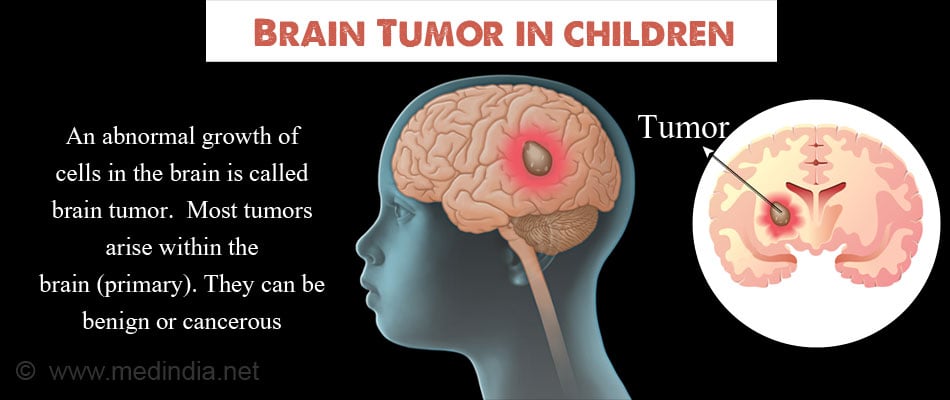
The types of brain tumors seen in children are different from adults and usually appear at different locations. In children, brain and spinal cord tumors are the second most common cancers after leukemia.
Structure and Function of the Human Brain
Brain is one of the most fascinating organ which controls human senses, movement, emotions, reactions, communication, memory and most importantly, human’s ability to think. It lies within the skull.
Skull is made of bones called cranium. There are layers of membranes between brain and skull, called meninges. The space between these layers of meninges contains a fluid called cerebrospinal fluid (CSF). This fluid circulates around the brain and spinal cord. In infants, the bones of the skull are separate and not sutured. This allows the infant’s brain to grow. There is a soft spot on infant’s skull called anterior fontanelle, where the four skull bones meet.
Vertebral column encases the spinal cord which extends from the brain stem through an opening in the base of the skull called foramen magnum. Vertebral column is protected by bones called vertebrae.
The main parts of the brain are:
- Cerebrum- It is the uppermost part of the head and is divided into two halves called cerebral hemispheres. These hemispheres are further divided into four lobes, temporal, frontal, parietal and occipital. Its outer layer is called gray matter and inner layer is called white matter. It controls human’s ability to think, learn, touch, and control body position. Humans are able to store information in their memories and express emotions through cerebrum.
- Cerebellum - It lies at the back of the brain. It controls muscle coordination and helps maintains bodily equilibrium.
- Brain stem- It connects the brain to spinal cord and is made up of three parts, namely the midbrain, pons and medulla. It coordinates the activities of the cerebrum and the cerebellum, interprets and sends the impulses to spinal cord that cause sensory response or motor (movement) response. It controls breathing, body temperature, heart rate, blood pressure, eye movements and swallowing.
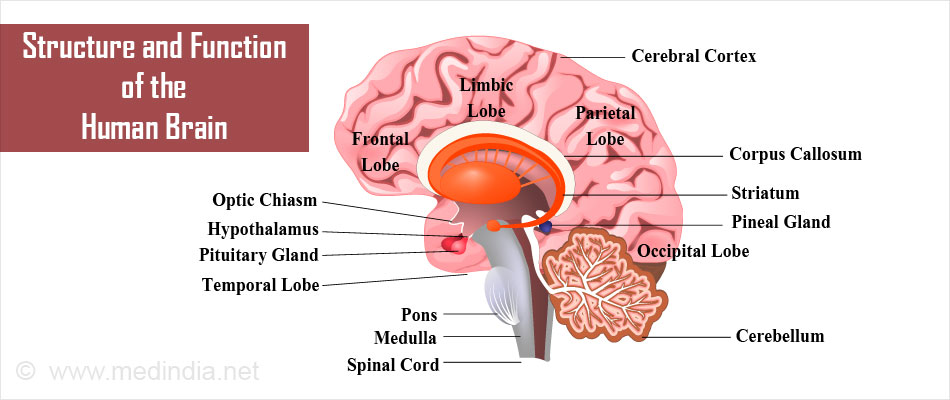
Facts about Brain and Spinal Tumors in Children
- Choroid plexus tumors arise in the tissue which produces cerebrospinal fluid. This tissue is located in the spaces of the brain called ventricles. They mostly happen in the first year of life.
- Medulloblastomas are again the most common type of brain tumor occurring in children before 10 years. They are malignant in nature.
- Ependymomas (a tumor that arises from ependyma tissue in the central nervous system) can be benign (noncancerous) or malignant (cancerous).
- Gliomas affect the glial cells of the brain. They are of several types categorized by their site of origin.
- Astrocytomas arise from the cells called astrocytes. They are further categorized into low grade and high grade. High grade are the most malignant of all and called glioblastoma.
- Brainstem gliomas occur very rarely and they are found almost only in children, before the age of 10.
- Oligodendrogliomas mostly occur in the cerebral hemispheres.
- Meningiomas are benign tumors occurring in the meninges of the brain
- Schwannomas are benign tumors occurring in nerve cells called Schwann cells that support the brain functions.
- Pituitary tumors affect the pituitary gland located at the base of the brain which produces hormones that control other glands in the body. Pituitary tumors are mostly benign in nature.
- CNS Lymphoma is a tumor originating from the lymphocytes found in the brain, spinal cord, or eyes. It is malignant in nature.
What are the Types of Brain Tumors in Children?
Brain tumors in children can occur in various parts of the brain.
More than 60% of tumors in children are located in the back of the brain. Tumors occurring in this area include:
- Medulloblastomas
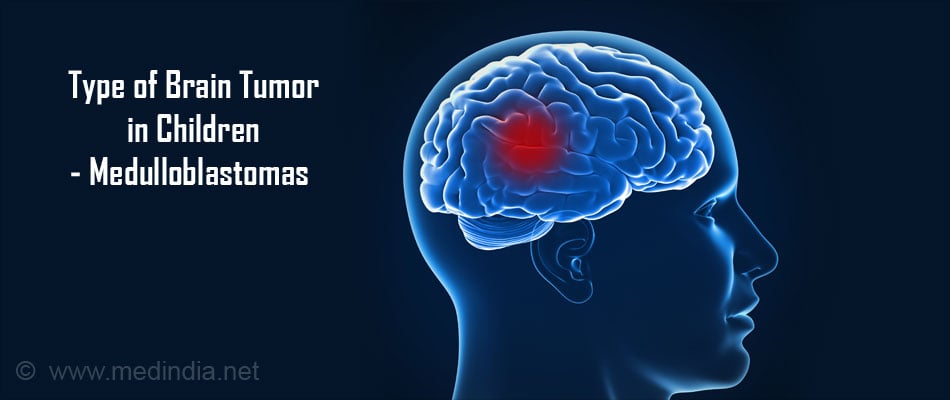
- Cerebellar astrocytomas
- Brainstem gliomas, and
- Ependymomas
30% to 40% of tumors occurring in childhood are located in cerebrum, within cerebral hemispheres namely,
- Astrocytomas
- Oligodendrogliomas
- Craniopharyngiomas
- Choroid plexus carcinomas
- Ependymomas
- Germ cell tumors
What are the Causes of Brain Tumors in Children?
The exact cause of brain tumor is unknown till today. In children, brain tumors may occur as a part of inherited syndromes like:
- Neurofibromatosis, genetic disorder affecting nervous system
- Von Hippel Lindau disease, inherited disorder affecting the central nervous system
- Li-Fraumeni syndrome, rare inherited disorder which predisposes patients to various types of cancer
- Turcot syndrome ( a condition that involves the formation of abnormal masses called polyps)
- Rubinstein-Taybi syndrome (broad thumb-hallux syndrome)
- Gorlin syndrome (basal cell nevus syndrome)

It might also result from radiation exposure, if the child has been exposed to severe high powered radiations during early developmental years of life.
What are the Symptoms and Signs of Brain Tumor?
The severity of signs depend on the size of the tumor, its site and level of pressure it exerts on the brain structures. Seizure is the most common symptom in children. In infants, an increase in head size with bulging at the soft spots is reported.
Headache is one of the most common symptoms of brain tumor. Patterns of headache are reported in brain tumor patients as below:
- Headaches get worse in the morning as patient wakes up; it goes up gradually as day progresses
- Headaches get worse with coughing or exercise
- Headaches associated vomiting or confusion
Symptoms commonly reported are:
- Irritability
- Personality and mental changes
- Headaches
- Vomiting
- Nausea
- Seizures
- Abnormal eye movements
- Blurring or double vision
- Fatigue
- Feeling drowsy
- Problems with coordination, concentration, memory loss
- Problems with hearing
- Weakness on one side of the body
- Swelling in the optic nerve of eye
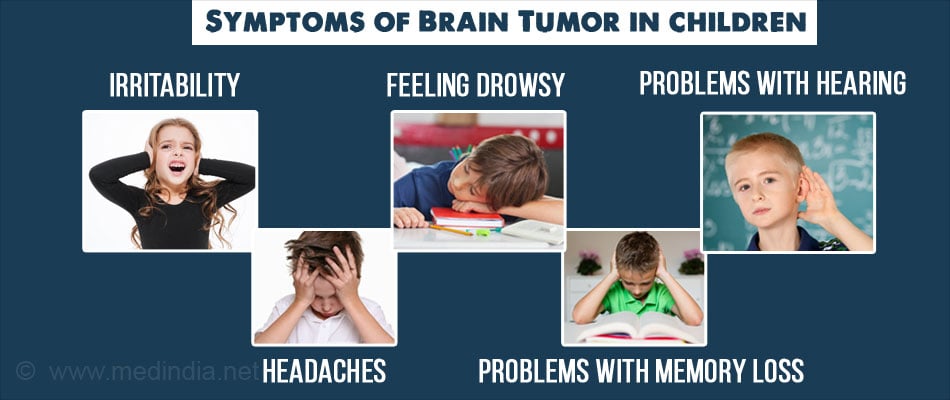
Symptoms reported as per the location of the brain tumor
- Tumor in the cerebrum causes weakness in one part of the body, problems with speech or understanding words, affect personality, and language
- Tumors in the basal ganglia causes abnormal movements and body position
- Tumors in the cerebellum causes difficulty in activities of daily life ( ADL’s ) such as walking, coordination and balance.
- Tumors around the pituitary gland cause problems with glandular functioning
- Tumors in or around cranial nerves cause problems with hearing, balance, weakness of facial muscles, swallowing
- Tumors in brain stem cause numbness in arms and/or legs as well as bladder or bowel problems.
How is Brain Tumor Diagnosed in Children?
If the patient reports any of the above symptoms and doctor suspects brain tumor, following tests are done to confirm the diagnosis
- Complete medical history and physical examination
- Neurological examination to check child’s brain and spinal cord function by testing child’s reflexes, sensation, muscle strength, vision, coordination, balance and alertness
- Blood tests are done to check child’s overall health condition.
Radiological Imaging such as Magnetic resonance imaging (MRI), Computed tomography (CT) scans show the location and extent of any tumor that may be present.
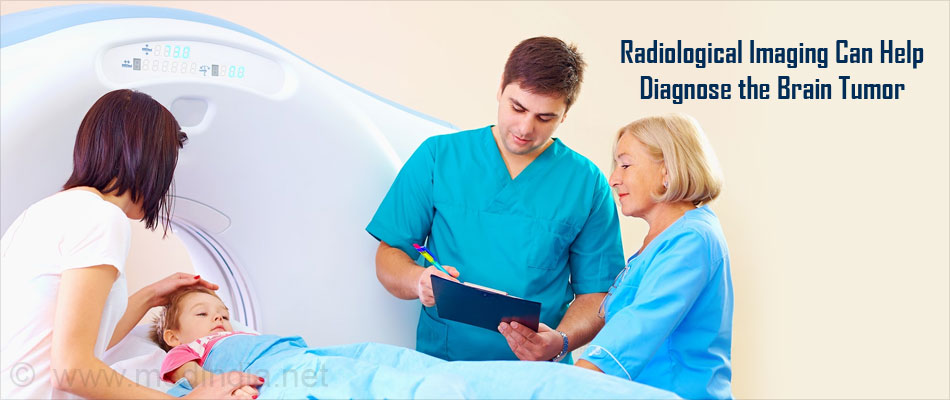
Magnetic resonance angiography may be done to look at the blood vessels in the brain.
Functional MRI to look at tiny blood flow changes in brain which helps in planning surgery or radiation therapy.
Positron emission tomography (PET) scan where a radioactive substance is injected into the blood to determine the level and grade of disease, extent of spread and affected area.
Biopsy and microscopic examination to determine whether tumor is malignant or benign.
- Lumbar puncture is used to analyze the chemicals released by tumor in the cerebrospinal fluid. For this test, the doctor takes out a sample of cerebrospinal fluid from the spinal cord and tests the same for various parameters.
What is the Treatment of Brain Tumors in Children?
Brain tumors are treated with surgery, radiation therapy and chemotherapy.
In general, Grade I and II tumors are low grade and treated with surgery and continuous monitoring. Grade III and IV tumors are malignant and grow quickly, therefore, are more difficult to remove surgically and require radiation and chemotherapy in addition to surgical removal.
- Surgery is done to remove the tumor. This surgery is called craniotomy because an opening is made in the skull. Attempt is to remove the entire tumor. If the doctor suspects that removing complete tumor might damage the vital brain tissue, maximum possible is removed and rest is treated by radiation therapy or chemotherapy.
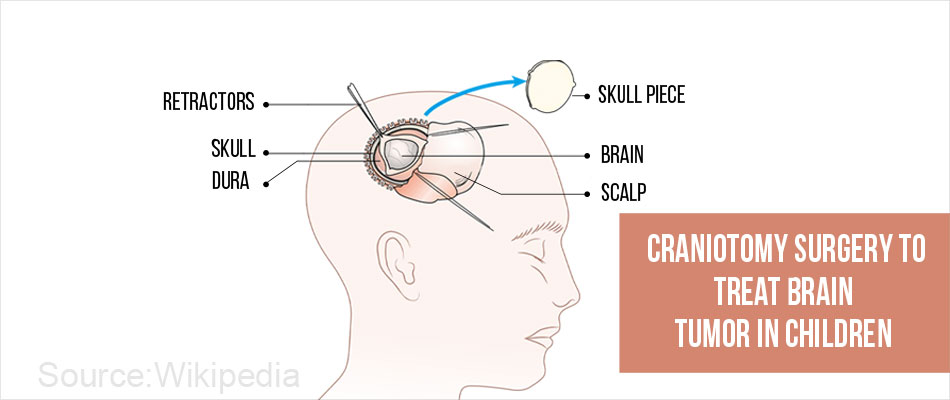
- Shunting operation might be done to drain out cerebrospinal fluid in case hydrocephalus as a complication is also present. This provides symptomatic relief of raised intracranial pressure such as headaches, blurred vision and vomiting.
Radiation Therapy is done by using high-powered rays to damage cancer cells and tumor tissue that cannot be removed with surgery. It is given in two ways, external radiation directed just to the tumor, surrounding tissue or entire brain and spinal cord. Internal radiation through a radioactive material placed directly in the tumor, called implant radiation therapy.
- Stereotactic radiosurgery is a radiation therapy technique which uses finely focused, high dose of radiation to damage the tumor cells in just one session.
- Fractionated stereotactic radiation therapy is a radiation therapy technique which uses finely focused, high dose of radiation to damage the tumor cells but divided into small daily doses given over several weeks.
- Chemotherapy uses drugs to destroy tumor cells and stopping their growth. It is given orally or intravenously
- Antiangiogenesis therapy stops the blood supply to the tumor by preventing new blood vessel development and removing blood vessels supplying nutrition to the tumor tissue. This helps in starving the tumor tissue and their necrosis.
Possible side effects of treatment are:
- Hair loss owing to radiotherapy and chemotherapy
- Tiredness
- Feeling sick
- Increased risk of an infection
- Skin changes in the treated area, redness, flakiness or soreness
Follow-up of Children with Brain Tumors
Following initial treatment, children should be followed up by the neurosurgeon for the following reasons.
- To determine any residual neurological deficits post-surgery that have to be addressed
- Referral for physical and occupational therapy to cope with deficits
- Encouragement of the children and parents to resume routine activities such as school, social activities and play as much as is tolerated.
- Referral of patient and family members for counseling by a psychologist if necessary
- Monitoring of possible side effects of radiotherapy or chemotherapy
- Checking for recurrence of tumor
Factors that Determine Prognosis of Childhood Brain Tumors
Tumors in the brain or spinal cord are formally staged and graded which help in determining the child’s treatment and prognosis.
Stage of the tumor depends on the size and extent of the tumor and degree of local spread or distant spread.
Grading of the tumor determines how much the tumor cells resemble the normal parent tissue when seen under a microscope. Lower grade tumors resemble the parent tissue histology and carry a better prognosis. Grading is done as follows:
- Grade I – Tumor is benign in nature and shows very slow growth. Patients suffering from grade I tumor are expected to have a long-term survival.
- Grade II – Tumor is associated with benign nature and relatively slow growth. It has a high chance of recurrence as a higher grade tumor.
- Grade III – Tumor is associated with malignant nature has a high chance of recurrence as a higher grade tumor.
- Grade IV – It is the most malignant stage of tumor and the prognosis of treatment is not very supportive.
Factors that may affect the prognosis include:
- Type of tumor
- Location of tumor and its size
- Grade of tumor
- Whether surgery is possible and if yes, how much of the tumor can be removed
- Child’s age
- Child’s functional level
- Child’s overall health, ensuring whether he can respond to the surgery/treatment
- Tumor state of spread to other parts of brain and spinal cord


